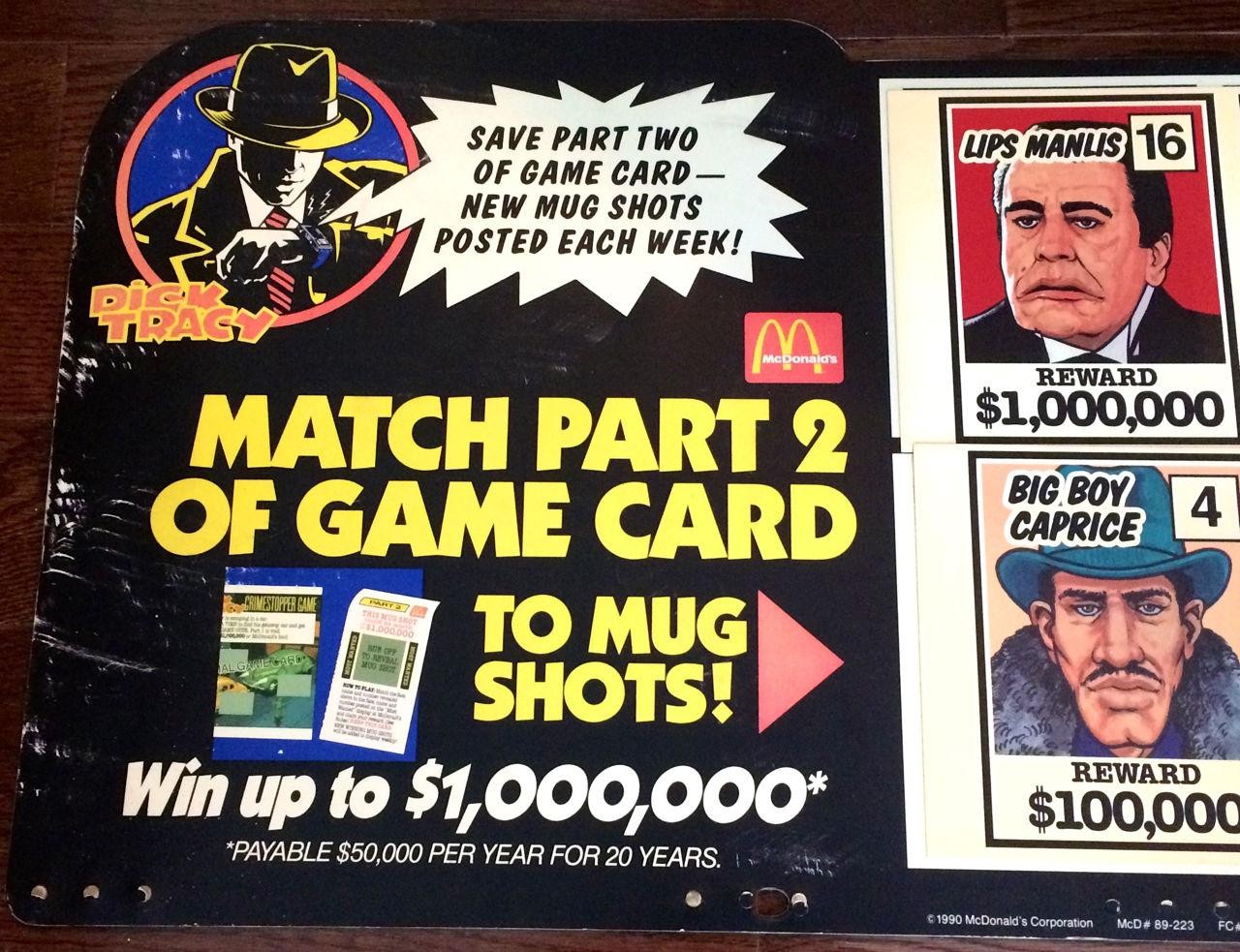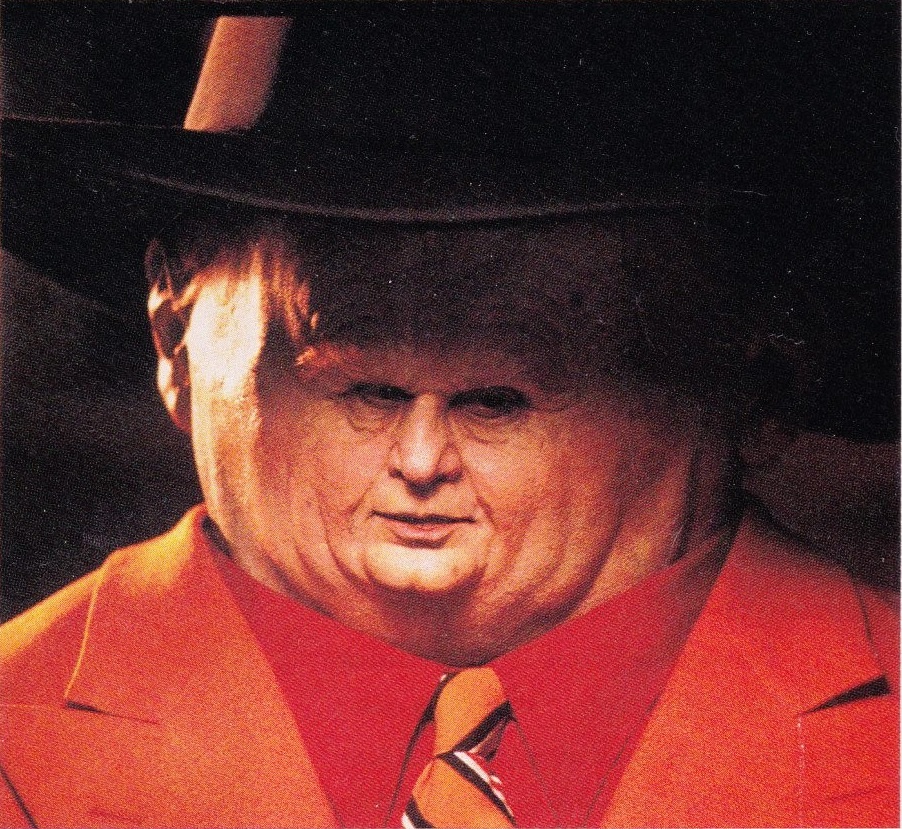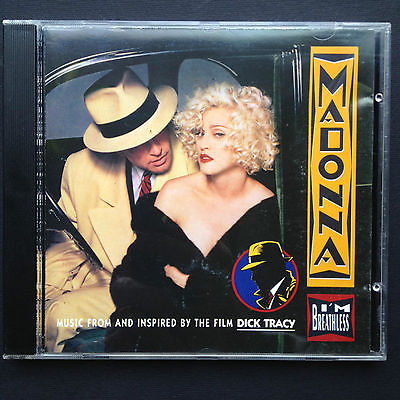Control Nathan Rabin 4.0 #36 Dick Tracy (1990)
Welcome, friends, to the latest entry in Control Nathan Rabin 4.0. It’s the site and career-sustaining column where I give YOU, the big-hearted Nathan Rabin’s Happy Place patron, an opportunity to choose a movie that I must watch and then write about in exchange for a one-time, one hundred dollar pledge to the site’s Patreon account.
The price goes down to seventy five dollars when you’re a repeat customer like Todd in the Shadows. The last time around he had me explore one of the many, many nadirs in Madonna’s film career in the form of W.E, her hilariously overwrought directorial vanity project juxtaposing Wallis Simpson’s epic love story for the ages with that of a randy contemporary woman whose sexual horizons are opened up by a erotic tryst with a hunky security guard played by a pre-fame Oscar Isaac.
This time Todd gave me a couple of different options, this time with Madonna in front of the camera. My included included the famously unsuccessful 1986 romantic comedy Shanghai Surprise, the notorious 1987 bomb Who’s That Girl and the 2000 dud The Next Best Thing as well as one bona fide success: 1990’s Dick Tracy.
My tastes range towards the lowbrow and famously terrible but I gotta admit that Dick Tracy hit me right in the nostalgic sweet spot.
If you were fourteen years old in 1990, as I was, and Batman was the transcendent film event of 1989, then Dick Tracy was much more than just a movie. It was a legitimate pop culture phenomenon. Beatty’s Dick was huge. It was impressive. The world could not wait to see Beatty’s Dick. They were downright salivating at the prospect.
Dick Tracy was easily the most hyped film of 1990. If Batman, like Superman: The Movie before it, took the tacky and ghettoized genre of the superhero comic book movie and made it glossy and sexy and A-list then Beatty’s big-budget tribute to Chester Gould’s macho world of mayhem and monster took the comic strip movie and made it AAA-list.
If a man who personifies Hollywood class like Beatty, an ARTIST in a field ripe with cheap, sausage-fingered vulgarians, was going to go slumming and make a silly comic strip movie for children about a square-jawed lawman from the funny papers then dammit, he was going to make the classiest, most prestigious and expensive tacky comic strip movie the world had ever seen.
To help realize his creative vision, Beatty hired the greatest craftsmen alive. He had the money and cachet to get the very best. Who wouldn’t want to work with a Hollywood legend like Warren Beatty, particularly with Touchstone throwing money around extravagantly in anticipation of a Batman-like windfall at the box office?
To give the film’s score an appropriately operatic, bombastic, Danny Elfman feel Beatty wisely went right to the source and hired Elfman to effectively cannibalize himself and his work on Batman. For songs Beatty finagled the services of no less a God of the smart set than Stephen fucking Soundheim, who wrote both the big, Oscar-winning jazz ballad “Sooner or Later (I Always Get My Man”) and a number of clamorous ditties.
For cinematographer, Beatty got the legendary Vittorio Storaro, the man who shot Apocalypse Now. For production designer, Beatty corralled the talents of Richard Sylbert, who won an Oscar for Who’s Afraid of Virginia Woolf before winning further nominations for Chinatown, Shampoo, Reds, Cotton Club and finally Dick Tracy.
Dick Tracy may not represent Sylbert’s best work. It’s hard to compete with classics like Who’s Afraid of Virginia Woolf and Chinatown on that level, but it may just represent the most work Sylbert has performed on any film. It's no knock on Dick Tracy that it’s one of those style-over-substance/style-as-substance spectacles where the production designer has the most important job. It’s a giddy exercise in popcorn escapism that is production-designed as much as it is directed.
Beatty’s effective if not terribly original stylistic conceit for Dick Tracy was to make a movie that feels as much like its comic strip inspiration as possible. To that end the film takes place not in the Chicago where I used to reside but rather an impressionistic, Art Deco comic book fantasy version of Chicago purposefully divorced from anything even vaguely resembling reality.
Dick Tracy feels like the halfway point between the dazzling live-action/animation noir fusion of Who Framed Roger Rabbit (in theaters Dick Tracy was accompanied by a Roger Rabbit short) and Frank Miller and Robert Rodriguez’s Sin City, which took the hard-boiled ethos of Chester Gould’s hardboiled, tough-guy world into dark, nihilistic, hard R territory while giving a CGI spin on Dick Tracy’s famous array of mobbed-up grotesqueries played by a thrilling combination of big names and world-class tough guy character actors.
Beatty obviously couldn’t get Jack Nicholson for the film, since he’d very lucratively mined this territory a year earlier with Batman, becoming the highest paid actor in film history in the process. If Beatty didn’t get Nicholson, or Robert De Niro, he seemingly got pretty much everyone else. Dick Tracy consequently feels like a reunion of the greatest, most important talents of New Hollywood all picking up big-ass paychecks in a wildly commercial new context.
Dick Tracy is the It's a Mad, Mad, Mad, Mad World of comic strip shoot-em-up movies. There are more stars in the film’s cast than there are in the heavens: Warren Beatty! Madonna! Al Pacino! Dustin Hoffman! James Caan! Dick Van Dyke! Paul Sorvino! Charles Durning! Seymour Cassel! Mandy Patinkin as a piano-playing lowlife! John Moschitta Jr., the fast-talking guy from the Micro Machines commercials! Oh, but the list goes on and on.
It’s crazy to think that there was a time when Al Pacino shouting and screaming and mugging his way through a crazily over-the-top, wildly theatrical star turn in a movie he clearly made for the money represented a big enough novelty that it was considered newsworthy and award-worthy, since Pacino was nominated for an Oscar and a BAFTA, among numerous honors for his enjoyable scenery-chewing here.
Dick Tracy was ultimately nominated for seven Oscars and won three for Song, Make-Up and Production Design. Dick Tracy’s wins are deserved, particularly for make-up and production design but the fact that a silly comic strip movie that got mixed reviews was so honored by the Academy says more about Hollywood’s reverence for Beatty than it does about the film’s quality.
Looking and acting like a cross between a man-sized sewer rat and Tony Clifton, Pacino delivers a performance of extraordinary quantity and quality. Every element of Dick Tracy is loud and calls out unashamedly for attention, but no element cries out for attention louder or more insistently than Pacino’s wildly expectorating main bad guy Alphonse “Big Boy” Caprice.
Caprice kicks off the action by launching an aggressive attack on his enemies in his bid to take over crime in 1930’s Chicago. He assumes control of rival mobster Lips Manlis’ (Paul Sorvino) club The Ritz after having Lips rubbed out and inherits Lips’ girlfriend Breathless Mahoney (Madonna) as well. Madonna was probably the biggest sex symbol in the world when Dick Tracy hit theaters. Her womanly charms squeezed into a series of skin-tight gowns, Madonna oozes sexuality as the film’s femme fatale, a sort of live-action Jessica Rabbit. Madonna is typecast to perfection as a woman who is all purring, heavy-breathing sexuality, naked guile and sexy danger. Yet even in such ideal circumstances, there’s nevertheless something a little remote and mannered about her.
Pitted against the appropriately named Tess Truehart (the eternally adorable Glynne Headley) for Dick Tracy’s heart, Breathless is a scheming beauty in a comic book realm full of beasts. The bad guys here aren’t just corrupt and ugly on a moral and spiritual level: no, their evilness seems biological as well, like it affects them on a cellular level.
Dick Tracy consequently has the strange distinction of being a beautiful, gorgeously composed movie about some of the ugliest characters ever to grace a movie screen. The bad guys here don’t just look bad: they look like mutations, more animal than human, more monster than man. In that respect, Dick Tracy is a masterpiece of old-fashioned craft when it comes to make-up. Sin City created an ultra-impressionistic world of sex and shadows, monsters and sin out of green screens and CGI but Beatty and his supremely over-qualified collaborators created something even more impressive using practical effects and make-up.
Dick Tracy is such a boy’s movie that it can’t help but see the scenes involving girls and romance and marriage and kissing and junk as inherently yucky and kind of gross, the kind of things audiences have to suffer through in order to get to the good parts.
Conventional wisdom holds that real-life lovers often make for perversely un-exciting onscreen paramours. That holds true here. The sexual tension and double entendre-laced relationship between two world-class sex symbols is never quite as sexy as it should be.
There’s something weirdly tentative about Beatty and Madonna. There’s a distance to Beatty’s performance rooted in the ideological and political differences between Beatty the legendary lefty icon and the rock-ribbed, reactionary Republican politics of Chester Gould and his most famous creation.
Madonna, meanwhile, seems a little concerned that if she emotes too much, or puts too much life into her performance she’ll pop out of the painted-on gowns that do much of her acting for her.
This is Dick Tracy we’re talking about here, so the fight choreography, such as it is, consists almost exclusively of manly punches and tommy gun fire. I suspect Dick Tracy would find kicks unacceptably feminine. As conceived by Chester Gould, Dick Tracy is a blunt instrument of a man who does not have time for niceties like the rights of criminals. Beatty obviously feels differently and seems reluctant to make Tracy’s brand of roughneck justice seem too exciting, lest audience confuse Gould and Tracy’s Neanderthal worldview for his own.
As an Oscar-winning Actor and Filmmaker of Quality and Importance, Beatty generally sets out to say something profound about the world we live in. With Dick Tracy he leaves the role of Serious Artist behind for that of an unabashed entertainer whose ambitions begin and end with immersing the biggest possible audience in a thrilling comic strip world of mayhem, madness and make-believe.
Nearly three decades on, Dick Tracy remains a feast for the senses. It’s pure entertainment from a man who generally takes himself a whole lot more seriously but is pretty damned good at delivering the blockbuster goods in the right context, with the right project and particularly the right collaborators.
I remember Dick Tracy largely as a mania, and a marketing fever, and a cinematic fad but it turns out it’s a pretty damn enjoyable motion picture as well.
If you’d like to make a Control Nathan Rabin 4.0 pledge you can do so over at https://www.patreon.com/nathanrabinshappyplace or pledge any amount of money and get access to patron-only content and “fun” “polls”









